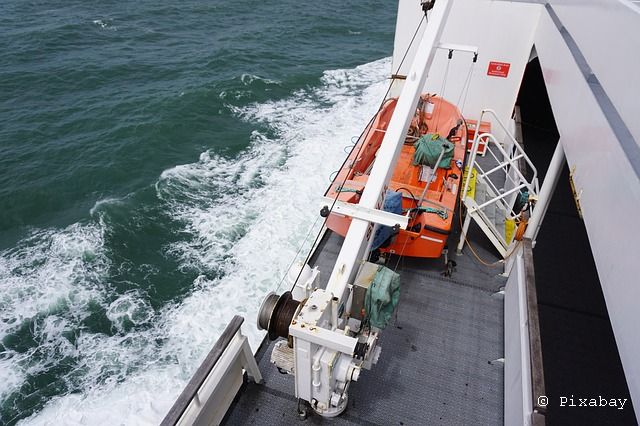Kristina Roepstorff has been a Research Fellow at the Centre for Humanitarian Action (CHA) since September 2019, where she heads the project on Shrinking Humanitarian Space. In this interview, she explains what Shrinking Humanitarian Space is and the challenges it poses for humanitarian action.
Kristina, the Shrinking Civic Space, in other words, the increasing restriction of civil society’s scope for action, is certainly familiar to many. But Shrinking Humanitarian Space – what exactly does that mean?
There is no universal definition of humanitarian space – different actors and organisations interpret the term differently. It was first used by the UNHCR in the 1980s in relation to the scope for negotiation with rebel groups in Central America; in the 1990s it gained popularity through MSF President Rony Brauman. According to Brauman, humanitarian space refers to free access to the affected population, which includes unimpeded communication with them as well as independent control and distribution of aid. The humanitarian space provides the framework for principled humanitarian action. When we speak of Shrinking Humanitarian Space, we mean that it is precisely this humanitarian space that is restricted. This happens, for example, through the increased politicisation of humanitarian assistance, hindered access to the population in need, or stricter legislation, as in the context of migration.
Since the arrest of Carola Rackete, the captain of Sea Watch 3, in June 2019, there has been much talk of criminalising humanitarian aid workers in civil sea rescue. But there are other causes that lead to a Shrinking Humanitarian Space. What are these and what role do they play in the current debate?
Shrinking Humanitarian Space is also caused, for example, by counter-terrorism legislation. This increasingly leads to humanitarian actors no longer having access to affected population groups. For example, certain laws classify humanitarian aid workers as members of a terrorist group and make it more difficult for humanitarian assistance to reach areas controlled by these same groups. This makes it difficult, if not impossible, to provide principled humanitarian assistance. In addition, humanitarian workers are increasingly threatened by attacks, which leads to increased security risks, for example in Somalia, in South Sudan, or in Afghanistan. Especially the local helpers are affected.
The way you describe it, it sounds as if humanitarian work has always been hindered and restricted. Is Shrinking Humanitarian Space just a new hip term?
The question of whether humanitarian assistance has not always been under pressure and has to constantly fight for its space is a fundamental question that is difficult to answer. However, some trends can be identified: Today there are more and more attacks on humanitarian aid workers and stricter legislation is being passed again and again. But it is also clear that there are more humanitarian workers, and humanitarian organisations are increasingly venturing into crisis areas. In addition, the Humanitarian Space is now being discussed more widely in the media, which has led to a changed perception of the topic.
What is the focus of your current research on Shrinking Humanitarian Space at the Centre for Humanitarian Action (CHA)?
My research at CHA currently focuses on migration in the Global North and South, with a focus on Europe. How is the Humanitarian Space restricted in the context of migration to and within Europe, and what can Germany do about it? I also look at counter-terrorism legislation, for example, and examine how this affects humanitarian assistance. I am particularly interested in how the Shrinking Humanitarian Space affects smaller, local actors. The larger humanitarian actors often have more resources and influence to respond to the Shrinking Humanitarian Space. Local actors do not. In the discourse on the Shrinking Humanitarian Space this has so far received too little attention. In order to understand how local actors can be strengthened, also against the background of the localisation agenda since the World Humanitarian Summit 2016, we need to take a closer look here. This is the topic I would like to address at CHA in the near future.
Both the Centre for Humanitarian Action (CHA) and the Maecenata Institute have for some time been dealing from different perspectives with the phenomena of increasing restriction of space for civil society engagement, which are summarised under the terms “Shrinking Civic Space”, “Changing Space” or – with a more specific orientation – “Shrinking Humanitarian Space”. The terms summarise, somewhat diffusely, a whole bundle of state, trans-state and non-state activities that put civil society under pressure. A prominent example is civil sea rescue in the southern Mediterranean. Humanitarian Space and Civic Space overlap as many civil society organisations are active in humanitarian aid – but the objectives of the respective spaces are different. Civic Space refers to the space for civil society, where fundamental rights such as freedom of assembly and expression are at stake, whereas Humanitarian Space refers to the humanitarian aid. More information here.
Kristina Roepstorff has been a research fellow at the Centre for Humanitarian Action (CHA) since September 2019. She leads the research project on Shrinking Humanitarian Space. In her last publication, she discusses the problem of Shrinking Humanitarian Space in Europe.



